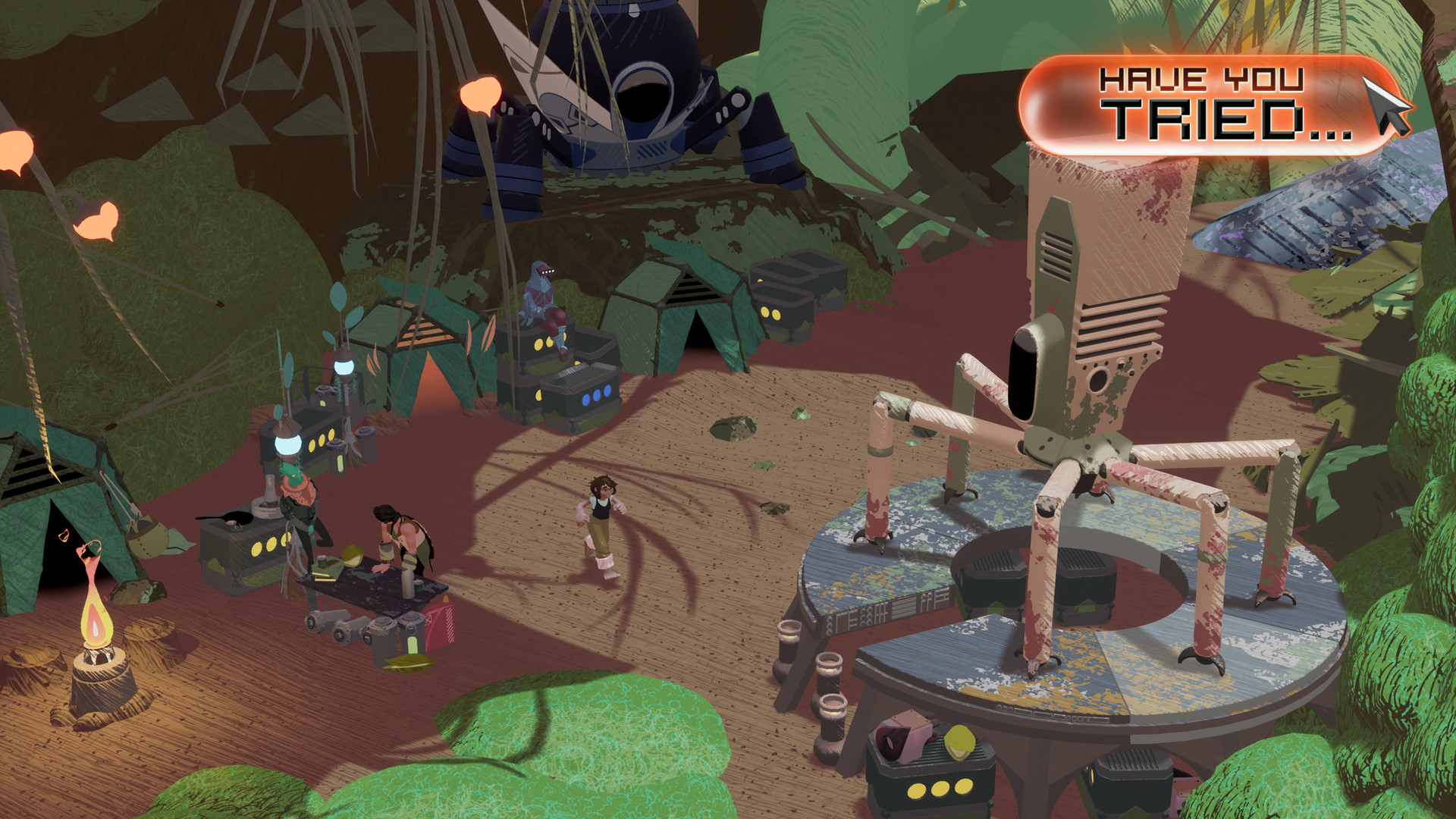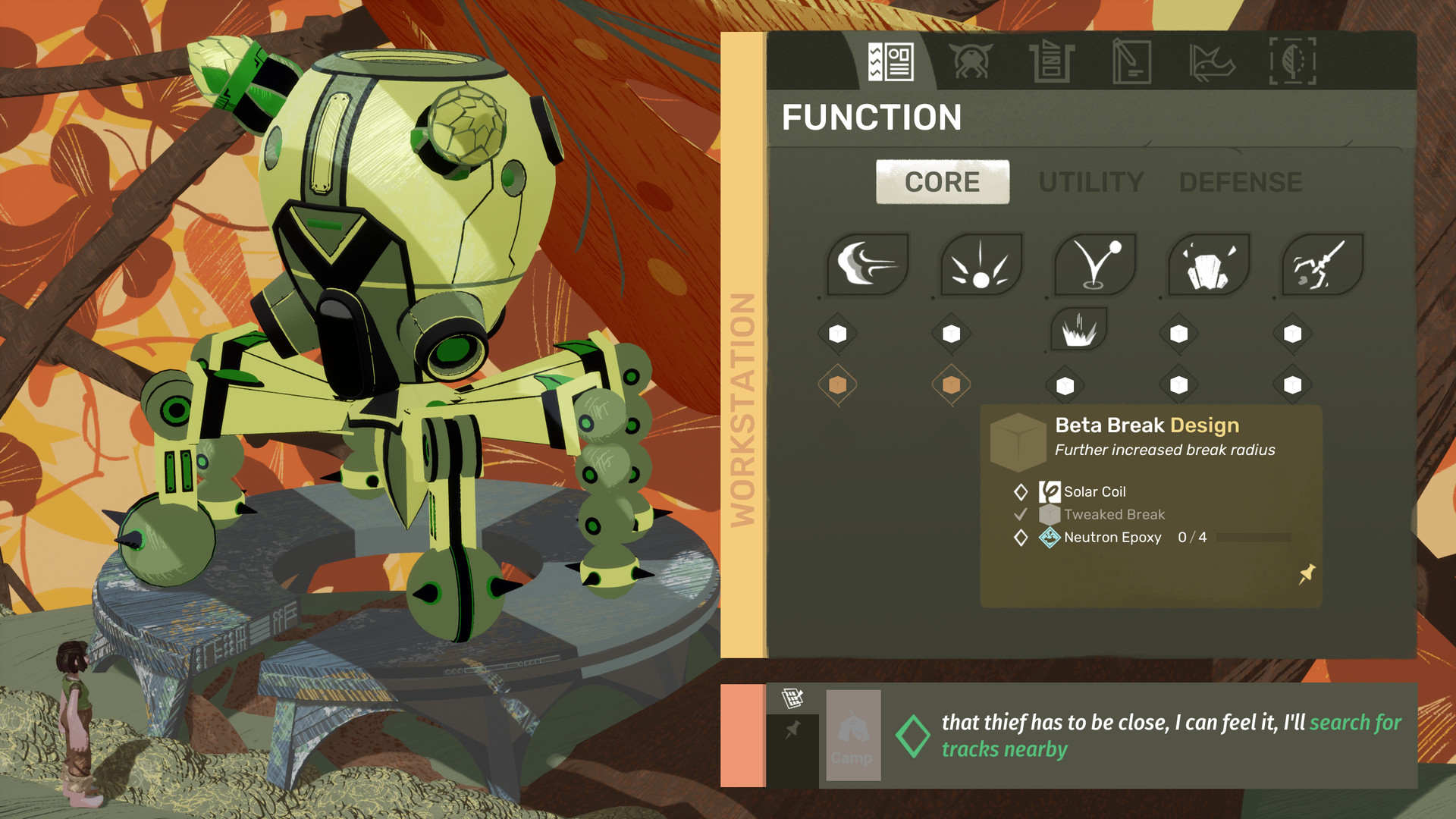Have you tried… playing reverse Pikmin but with a mech in the magical Stonefly?
From the creators of Creature in the Well comes a coming-of-age story about a mini mech pilot

Creature in the Well, a kick-ass bullet-hell action game from developer Flight School Studio, was a game about lightning. It was a fittingly electrifying experience that played to its central element both mechanically and aesthetically. Stonefly, the studio's next game (published by MWM Interactive), is about wind. It's more easy-going and freeform, and the wind itself is the main weapon on your tiny flying mech which you pilot through gargantuan forests filled with massive bugs. And after one look, Stonefly has quickly become one of my most anticipated games of the year.
Stonefly stars Annika Stonefly, a young machinist working with the former mech pilots in the Acorn Corps to reclaim a lost mech and reconnect with her father. The details of the story are kept deliberately vague in my preview session, but Flight School Studio says family legacy is a central theme. You can also build relationships – though not necessarily romantic ones – with individual Acorn Corps members whenever you return to camp.

That said, the most important – and to me the most promising – parts of Stonefly take place out in the wild. I'm not sure if Annika and the other Acorn Corps members are very small or if the world around them is just overgrown, but I do know that piloting a palm-sized mech through a Ferngully-style larger-than-life forest filled with enormous insects is immediately exciting. Whether in specified missions or free-roam explorations, your goal is to explore the forest and gather rare minerals or parts to upgrade your mech. Upgrade systems fueled by exploration always manage to get their hooks in me, and Stonefly's is especially effective here because it's so damn flavorful.
Different areas of the forest yield different minerals, so you need to choose your next expedition wisely based on the upgrades you're looking to make. That said, encountering new bugs can inspire Annika to create new mech upgrades – by copying the springy legs of a cricket, for instance – turning discovery itself into a valuable resource and unlocking new options as you explore. By scouting enough areas, you can also track down utterly titanic aphids which burrow underground and briefly emerge covered in rare resources, making them a short-lived goldmine as well as a prime target for more aggressive bugs. This cycle of exploring procedurally generated levels, scouting aphid encounters, harvesting minerals, and upgrading your mech is the base for everything in Stonefly, and I'm all about it.
A mecha exterminator
You're gonna need those upgrades to take on the increasingly imposing bugs that stand in your way. There's a huge variety of weapons and gadgets available, but no matter how you build Annika's mech, you'll be weaponizing the wind. Combat in Stonefly is presented in very clean, clear, and understandable ways, and the wind is at the heart of everything.
You don't load your mech up with machine guns and blow bugs to smithereens. Instead, not unlike Super Smash Bros. – one of Flight School's inspirations, as it happens – your goal is often to knock enemies off the level. Once you stun a bug or knock it on its back, all it takes is a well-angled gust of wind to knock them over the edge and out of your way. This gives combat a king of the hill flow, and it allows for all sorts of inventive wind-powered abilities to shine.

Bomber-type bugs, for instance, shield their body with their wings, but by landing on them and using your jets to blow their wings back, you can expose their vulnerable spots. Tough bull beetles are easily distracted by a remote lure, leaving them open to be flipped from behind and subsequently blown away. Hordes of tiny bugs can be kept at bay with a dome of wind – more of a contained cyclone really – giving you a safe space to gather minerals. You can load your mech up with heaps of core, utility, and defensive abilities, and with short "Overwatch-level" cooldowns standing in for any sort of mana or energy system, they're all readily available.
Sign up to the GamesRadar+ Newsletter
Weekly digests, tales from the communities you love, and more
The core gameplay loop in Stonefly is already hugely engrossing, and I haven't even been able to properly play it. The areas you explore affect what minerals you obtain and what bugs you encounter, which in turn affects what mech upgrades you unlock, which in turn determine how you deal with bugs out in the wild. I also love that there's a very real and understandable sense of danger to the world. The sheer scale of things turns simple bugs into frightening foes, and it means otherwise ordinary sights are memorable features. A small branch becomes an invaluable bridge; a cupped leaf, a welcome platform; a light breeze, an essential speed boost. Coupled with its cute art, easygoing difficulty (dying boots you to camp but the game doesn't dock you for any resources), and naturalistic soundtrack – accurately described as if played through a wet hollow log – Stonefly looks like another quietly unmissable adventure from Flight School.
Stonefly out on PC later this summer, with a Nintendo Switch version still a possibility.

Austin has been a game journalist for 12 years, having freelanced for the likes of PC Gamer, Eurogamer, IGN, Sports Illustrated, and more while finishing his journalism degree. He's been with GamesRadar+ since 2019. They've yet to realize his position is a cover for his career-spanning Destiny column, and he's kept the ruse going with a lot of news and the occasional feature, all while playing as many roguelikes as possible.


